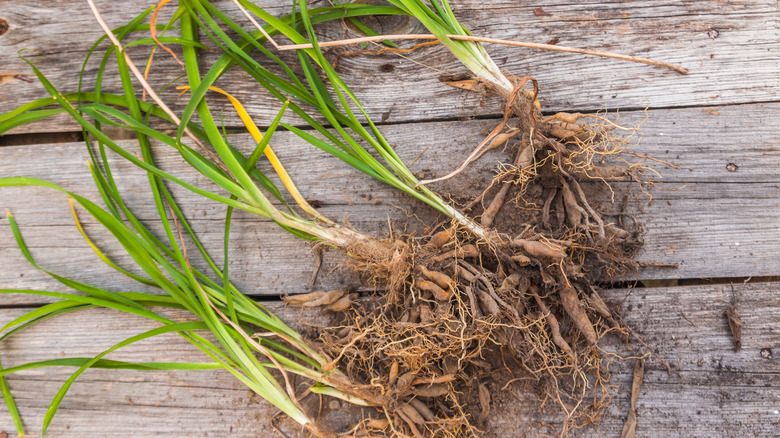No matter how well you care for your daylilies, has your once-vibrant garden lost its sparkle? Reduced blooms, clustered foliage, and stunted growth are clear signs of overcrowding. The good news is that dividing your daylilies can work wonders toward bringing back their glorious splendor. Autumn is the perfect time to do so. As the summer heat cools down and nature transitions, your daylilies are gearing up for their beauty sleep. That’s when you swoop in with your dividing skills.
By dividing your daylilies in late summer or early fall, you give the plants a chance to finish flowering and the temperature to start dropping. This will give the freshly divided sections plenty of time to grow strong roots before winter’s chilly arrival. Plus, the milder weather means less stress for your plants. The plants have all the time they need to settle in, establish robust root systems, and prep for a dazzling comeback.
Daylily division made easy
Give your daylilies a little extra hydration a day or two before digging them up so the ground becomes more cooperative. Once you’re ready, grab a spade or shovel and gently loosen the dirt around the plants, taking care to avoid damaging the roots. Shake off the soil and find the natural separations within the clump. You may be able to divide the clump by hand. Use a sharp spade or shovel to make clean cuts with a single downward motion for the sections that won’t give. Each divided section should have its own set of foliage and roots so they can flourish independently.
With the daylilies successfully separated, prepare the garden bed by removing weeds or debris and making sure the soil is in good shape. Good drainage and a touch of organic matter will create a welcoming home. Dig holes wide and deep enough to accommodate the roots comfortably, and make a mound of earth to support the crowns (where the foliage meets the roots) without crushing the roots. Then, pat down the soil around the plants and thoroughly water them to help settle the dirt.
Timing, Care, and Balance

There are several things you need to know about dividing perennials, such as daylilies. For example, when dividing daylily clumps, it is best to choose plants that have been in the ground for at least three years, as they are more likely to benefit from division and produce more blooms. After that, you can then execute this task every three to five years. Choose a cloudy day to keep them stress-free and prevent them from drying out. Handle the clumps with care, making sure not to harm their delicate roots and foliage. While the ideal time to divide daylilies is in the fall, this may vary based on your region and climate. For instance, if you live in a cold area with harsh winters, dividing in the spring can give the sections enough time to establish strong roots before winter.
Be careful not to over-divide your daylilies, as too much division can stress them and impede their ability to recover and bloom. Dividing each clump into sections with three to five shoots is recommended, as this provides a good balance between rejuvenation and plant recovery. And don’t worry if their blooms don’t dazzle you the following spring. It can take a year or two for the divisions to provide a brilliant show again.